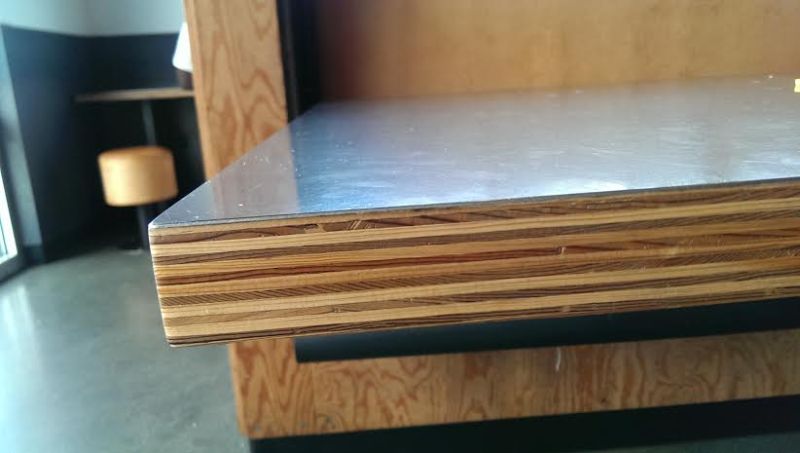Getting Started with Finger-Jointing
Advice on tooling up to finger-joint moulding stock on an occasional basis. April 2, 2013
Question
I very often have the need to joint short lengths of material, usually 1 1/16" x 2" x whatever length. While I often toss this stuff, sometimes I need to use some of my cutoffs which may be 12 to 36" in length. I have been using a half lap that is 1 1/4". I would rather use a finger joint. Is anyone using a finger joint cutter for this type of application? I would need to set up on a shaper, but it looks like it could be pretty risky or dangerous. I know it would be a slow process, but time is not a big factor here.
Forum Responses
(Architectural Woodworking Forum)
From contributor L:
We've used a sliding table shaper for this in the past. We fitted it with an air clamp and a backup on the fence that we could move down as needed. It works fine and is less risky than a lot of shaping operations. Make a guard that covers the cutter. You could just use a sled guided by the table slot also. We made a glue application device that dipped into the glue with a foot pedal. It was simple to make, UHMW cut twice on the same finger joint head to give some glue clearance. We never did get a good clamping scheme. Too much glue mess - it worked, sort of. I had figured out a different clamping unit but never built it. We quit making the product we had been using the finger joining on. The economics of the process were such that if you had anything else to do productively you shouldn't be finger joining our way.
From the original questioner:
I agree finger jointing will be a slow time user for a small shop. This will be just an occasional use type thing. I use a lot of finger jointed material, but this is components made on a large scale by my suppliers. Sometimes I need a few more feet of material to finish out an order, and I may be a week or so from getting my next shipment, so using my time to finger joint a few pieces to keep my order moving is well worth it. Did you use a single cutter so that you ran the two pieces without adjusting the height of the cutter? Such as running one piece flipped upside down or opposite to the other piece so they match?
From contributor H:
Amana makes a finger joint router bit that should do the job for you.
From the original questioner:
The Amana cutter is the setup I was thinking about, though I had been looking at another brand. I like reversing one piece the way they describe, so the bit does not have to be consistently adjusted. Plus I intend, if possible, to use this with a finished thickness material, so I need the surface to match nicely.
From contributor H:
I began years ago with the Amana set bit but now buy the individual cutters in volume from Woodworkers Supply. We took off the bearing and bottom shoulder cutter years ago and run with a fixed fence and a small power feeder. The cutters are stacked with 3/16" centers and we skip face our standard stock to 15/16" and 1 1/8". This way we don't have to adjust the cutter head height, only the feeder which is non-critical. If other thicknesses are required we plane the material to fit within the 3/16" stacking parameters. I have a small import shaper dedicated to this task.
We used to send the wings out for sharpening and I milled sets of spacers in .002 increments of thickness to work with the various sharpened cutters. This wasn't necessary any longer after I started buying the cutters in volume since the cost to sharpen is not that much less then new cutters. Plus there is no fussing with resetting cutter head height to the sharpened set.
We replace the cutters four at a time rotating the bottom ones (that get the most use) upward and the new group of four going on the bottom of the stack. I'd have to look to be sure but I think we have ten cutter wings on the shaft (again no bearing so this gives extra room). This is our primary method of joining our moulding segments for paint grade as well as some other applications.
From the original questioner:
Do you find clamping or pulling the joints tight (when end jointing) to be much of a challenge? I have had what I believe were dry joints separate on stock that we purchased, and if I remember correctly it did not take that much pressure to glue them back together. Any tips on gluing and clamping would be much appreciated.
From contributor H:
The gluing and clamping processes are the real tricks to work out on these mitered finger joints. There are a lot of different ways to go about it. Some are better than others depending upon individual situations.
From the original questioner:
I did go ahead with ordering a finger joint bit from Woodworkers Supply. I looked at the Amana, but for my use I thought this one would do the trick. I started out using it to joint some stiles on a large order for stained finish alder shutters. My first efforts left something to be desired, but after a week or so and having joined 10 or 12 stiles I am really pleased with the results. The joints are strong, and barely visible. Since I am using a finished thickness material I was concerned that the surface would not be flush. After adjusting the bit a few times I can now get so close that just a few passes from my sander yields what I desired.
